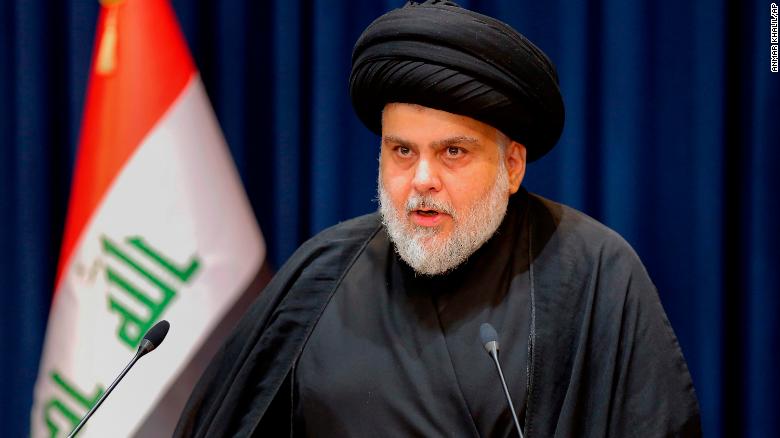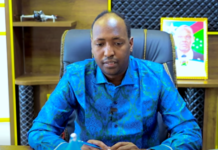
It took just 24 hours for Iraq’s most powerful man to showcase his mighton the streets of Baghdad on Monday, in what turned out to be one of the capital’s most violent episodes in years.
Muqtada al-Sadr, a fiery cleric who counts both Iran and the United States as his adversaries, withdrew from politics on Monday out of frustration at his opponents’ maneuvers against him. The move prompted his loyalists to rampage through the streets and storm the heavily fortified Green Zone, where government buildings and diplomatic missions are located.
“Essentially, he let his supporters have a free 24 hours to do as they pleased,” Sajad Jiyad, a fellow at the Century Foundation in New York, told CNN’s Eleni Giokos on Tuesday. After at least 21 people were killed and 250 injured, Al-Sadr called on his followers to pull back.
“It does send a message to his rivals that he is a key player in the country,” said Jiyad. “Also that he has potential to use violence as much as any other side.”
The episode served as a reminder of the fragility of the government in Baghdad, which remained largely neutral in the crisis, as well as the competing players at home and abroad that seek to control the country’s politics.
Here’s what you need to know about the chaos in Iraq:
Who is Muqtada Al Sadr?
Al-Sadr, 48, is a cleric from a prominent Shiite family who commands the support of millions across the country.
His father, Ayatollah Muhammad Sadiq al-Sadr, was an important Shiite figure who openly spoke out against Saddam Hussein and his ruling Baath party. He was assassinated in 1999, in an operation believed to be the work of Saddam’s forces or those loyal to him. The younger al-Sadr subsequently inherited his father’s popularity.
Al-Sadr’s capacity to reinvent his role in Iraqi politics, and tap into a strong vein of Shiite protest, has helped him survive and outmaneuver many rivals over the past two decades. His latest move reinforces his place as one of the most influential figures in Iraq.
How is his relationship with foreign powers?
Al-Sadr is best known in the US for his role in leading the Mahdi Army, which he formed in 2003 during the US invasion of Iraq to fight against US-led coalition forces.
He fled to Iran during the US occupation of Iraq and returned to his country in 2011. Since then, he has become one of the fiercest critics of Tehran’s influence in Iraq and has sought to counter it. He now fashions himself as an Iraqi nationalist.
The cleric has good relations with Gulf Arab states like Saudi Arabia and the UAE, which see Iran as a threat to regional security.
“The US and the Gulf have been indirectly supportive of al-Sadr because of his stance against Iran, ignoring his historic strong ties with Iran and Iran’s ability to influence him,” said Marsin Alshamary, a research fellow at the Harvard Kennedy School’s Middle East Initiative.
What triggered Monday’s events?
Parliamentary elections in October 2021 saw Iran-backed Shiite blocs lose seats to Sadrists. Despite his win, al-Sadr failed to form a government amid opposition from Iran-backed rivals.
So, in June, he pulled his bloc from parliament in protest. The Iran-backed blocs subsequently attempted to form a government without his support in July, which prompted Sadrists to stage protests outside parliament.





















